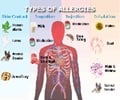Cats and cat allergens in the home clearly raise the risk of the allergic sensitisation of children up to the age of two.
Cats and cat allergens in the home clearly raise the risk of the allergic sensitisation of children up to the age of two. For older children, however, the influence of the environment at home on the development of cat allergen sensitization decreases. This is the conclusion reached by scientists from the GSF – National Research Center for Environment and Health (GSF), Helmholtz-Association.
The study published by Chih-Mei Chen et al. in the May edition of the distinguished Journal of Allergy and Clinical Immunology did not approve earlier papers, according to which contact with cat allergens during the first few months of a child’s life has a protective effect. The team of authors could even show that apart from keeping cats, even just repeated contact with cat hair within or outside the parental household increases the frequency of allergic sensitisation on the basis of the detection of IgE-specific antibodies against cat allergens.The study is based on data of the multicentric LISA study. LISA stands for Lifestyle – Immune - System – Allergy and is intended to demonstrate the influence of lifestyle on the immune system and the development of allergic diseases in children. Apart from the GSF – Research Center for Environment and Health (GSF) and the Centre for Environmental Research Halle Leipzig (UFZ), other university and clinical partners are also involved. In the framework of the study the parents of the children born between late 1997 and early 1999 were repeatedly questioned about different family and health parameters as well as the frequency of contact with cats and other pets.
The longitudinal analysis of the development of allergic sensitization due to contact with cats, as it has just been published, also relies on a house dust sample taken from the parental home three months after each child’s birth, in which cat allergens were determined, as well as on the determination of the content of IgE antibodies to cat allergens in the children’s blood. The blood tests were carried out at the age of two and six years.
Up to the age of two the scientists found clear connections between exposure to cat allergens at home and the frequency of allergic sensitisation. This connection was found to a lesser extent in six-year-old health outcomes “Contact with cat allergens at home does not have the main significance in this age group,” explains the head of the research unit Environmental Epidemiology at the GSF Institute of Epidemiology, Dr. Joachim Heinrich. Due to their greater range of action older children also come into contact with animal hair, when they are with friends and relatives, in child-care centres and playgrounds, and can get sensitised there. Statistical connections on the basis of cat allergen exposure at home are blurred by exposure outside the children’s homes.
In all the scientists found allergic sensitisation to cat allergens in 1.3 per cent of the two-year-old and 5 per cent of the six-year-old children.
“The most important risk factor for allergies in children,“ Joachim Heinrich, “is, however, still the family history. If the parents suffer from hay fever, asthma or pet allergies, their children are more likely to also show allergic symptoms”. The study also shows that risk families in particular must still be advised not to keep cats and to avoid contact with cats in general. This, however, does not guarantee sufficient protection from allergic sensitisation with cat allergens.
Source-Eurekalert
SRM/B











